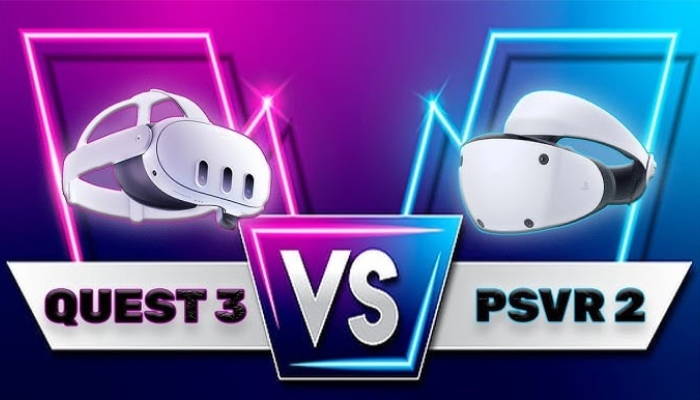
The upcoming iPhone 15 models in 2023 are anticipated to come with USB-C ports in lieu of Lightning connectors, enhanced modem chips for faster connectivity, improved camera technology, and various other enhancements
In September 2022, Apple introduced the iPhone 14 and iPhone 14 Pro models, but speculations about the iPhone 15 had been circulating well before the latest iPhones hit the market. As the release date for the iPhone 15 draws near, these rumors are gaining momentum, and we now have a substantial understanding of what to anticipate this year.
Apple’s blueprint includes launching a total of four iPhone 15 models, retaining the same sizes as the iPhone 14 lineup, which includes two 6.1-inch iPhones and two 6.7-inch iPhones. Among them, one of the 6.1-inch iPhones will represent the standard iPhone 15, while one of the 6.7-inch variants will be designated as the iPhone 15 “Plus.” The remaining 6.1 and 6.7-inch iPhones will fall into the higher-end and more premium “Pro” category, potentially carrying an even higher price tag this year.
Just like with the iPhone 14/14 Pro series, the most exceptional features will be exclusive to the iPhone 15 Pro models, making the added expense a worthwhile investment.
Based on current rumors, it appears that all iPhone 15 models will feature a USB-C port, replacing the Lightning port. Additionally, the Dynamic Island feature will be available on the iPhone 15 and iPhone 15 Plus, in addition to the iPhone 15 Pro and Pro Max. This means that Apple is set to abandon the notch, a design element it has retained since the iPhone X, in favor of a more streamlined and less obtrusive look.
Apple’s strategy includes opting for Qualcomm modem chips for these new devices, as their in-house modem chips under development are not yet ready. Additionally, there are expectations for the integration of new UWB (Ultra-Wideband) chips, likely for compatibility with the Vision Pro headset. The standard iPhone 15 models are set to receive an upgrade to the A16 chip, which was previously featured in the iPhone 14 Pro models. In contrast, the iPhone 15 Pro models will utilize faster and more efficient 3-nanometer A17 chips. The Pro models are also anticipated to undergo enhancements such as titanium frames, slimmer bezels, and subtle design adjustments, including more curved edges. Furthermore, the iPhone 15 Pro Max is likely to incorporate periscope lens technology to enhance its zoom capabilities.
Anticipated pricing for the iPhone 15 models suggests continuity, with the base 6.1-inch variant starting at $799 and the larger 6.7-inch iPhone 15 Plus commencing at $899.
This summary encompasses all the information we’ve gathered about the iPhone 15, while a comprehensive review of the premium iPhone 15 Pro models can be located in our dedicated iPhone 15 Pro and iPhone 15 Pro Max compilation.
Design
The iPhone 15 models are anticipated to retain a resemblance to the iPhone 14 models, but a notable change is expected across the entire range – the pill-and-hole cutout. This alteration signifies that all iPhone 15 models will eliminate the notch, embracing the Dynamic Island technology introduced in the iPhone 14 Pro models.Since there aren’t any significant design alterations planned, Apple will maintain its lineup of four models: the iPhone 15 with a 6.1-inch display, the iPhone 15 Pro with a 6.1-inch display, the iPhone 15 Max with a 6.7-inch display, and the iPhone 15 Pro Max with a 6.7-inch display. The “pro” variants will come with premium features and a higher price tag, while the regular iPhone 15 models will be more budget-friendly.
The iPhone 15 and iPhone 15 Plus will feature notable design changes, such as the adoption of a USB-C port in place of the Lightning port and the shift from the notch to the Dynamic Island. The USB-C port marks a new addition to all iPhone models, while the Dynamic Island technology made its debut with the iPhone 14 Pro and iPhone 14 Pro Max.
In addition to the Dynamic Island feature, it’s possible that all iPhone 15 variants may come with a more energy-efficient OLED display driver chip, produced using a 28nm manufacturing process. This advancement is expected to result in lower power usage, potentially leading to enhanced battery life for all iPhone 15 models.
However, it’s worth noting that the standard iPhone 15 models will not incorporate ProMotion technology or an always-on display, even though they will adopt the Dynamic Island feature. Apple intends to keep these features exclusive to the Pro lineup.
Color Options
According to the latest speculations, the upcoming iPhone 15 lineup is expected to introduce fresh color options, including a vibrant blue and a coral hue that falls somewhere between pink and orange. Meanwhile, the familiar colors of yellow/green, black, and white are set to make a return as part of the standard color choices for this year’s models.
There has been some ambiguity surrounding the colors of the devices due to their subdued tones. A recent leak of dummy models, claimed to accurately represent the upcoming colors, has clarified the situation. It appears that the confusion around green and yellow arises from Apple’s use of a light greenish-yellow shade, and a similar situation applies to the pink color.
iPhone 15 Pro Exclusive Design
There are speculations indicating that the iPhone 15 Pro models may sport slimmer and more pronounced curved bezels compared to the iPhone 14 Pro models, as evidenced by renders generated from the information circulating. These enhanced curves will remain exclusive to the iPhone 15 Pro variants. In contrast, the iPhone 15 models are anticipated to maintain a design akin to the iPhone 14 models, featuring flatter edges, an aluminum frame, and glass panels on the front and back. It’s unlikely that the standard iPhone 15 models will showcase the same thinner bezels as the Pro models.
The iPhone 15 Pro series from Apple is anticipated to incorporate front glass with more pronounced curves, creating a seamless integration with the device’s frame. Additionally, there are expectations that Apple will opt for titanium instead of stainless steel for the chassis of these models. Notably, the iPhone 15 Pro models are set to introduce an “Action” button, taking over the role of the mute switch. This multifunctional button will have various capabilities, such as triggering Shortcuts, launching the camera, activating the flashlight, enabling silent mode, and more.
Frosted Glass?
There’s an unsubstantiated rumor circulating on Weibo that hints at the possibility of the iPhone 15 models incorporating a frosted glass back, a design element that Apple has traditionally reserved for its Pro variants. Typically, the standard models sport a glossy black finish, while the frosted glass texture is associated with the higher-end and more expensive models.
If this information proves to be correct, both the regular iPhone 15 models and the iPhone 15 Pro models will employ frosted glass for the rear of the device.
Case Fit
A series of 3D printed iPhone 15 and iPhone 15 Pro models provides a glimpse into the compatibility of previous-generation iPhone 14 cases, and it seems that older cases will not be suitable for use with the new iPhones.
Minor alterations in the dimensions of the iPhone 15 lineup will generally render the cases incompatible. However, it’s worth noting that the iPhone 15 Plus can fit into an iPhone 14 Plus case. The larger rear camera housing on the Pro models, as well as the redesigned curves and button placements, hinder the proper functioning of iPhone 14 Pro cases with the new devices.
Case Options
Several rumors have indicated that Apple may opt out of producing leather cases for the iPhone 15 series. Instead, they are considering introducing a new environmentally friendly leather alternative case to complement their existing Silicone cases. This decision aligns with Apple’s commitment to sustainability.
Leaks of iPhone 15 Pro cases substantiate that the upcoming models will have the power and volume buttons slightly repositioned, with these buttons situated a bit lower compared to the placement on the iPhone 14 Pro models. Additionally, these cases include a larger cutout at the bottom to accommodate the USB-C port.
The cases feature a cutout for the Action button, which will replace the mute switch. Unlike a switch that requires gripping, the button necessitates a smaller cutout.
In August, leaked images of USB-C connector components designed for the upcoming iPhone models provided additional evidence of Apple’s shift towards USB-C charging technology.
No Touch ID
Despite persistent rumors suggesting Apple’s contemplation of reintroducing Touch ID to its flagship iPhones through an under-display method, it is unlikely that the iPhone 15 models will incorporate Touch ID. The prevailing biometric authentication method for these models is expected to remain Face ID.
Apple is indeed working on an under-display Face ID technology, but its readiness isn’t anticipated until at least 2025. In 2023, the iPhone 15 is expected to continue utilizing the Dynamic Island, which Apple plans to expand to all models, moving beyond its exclusive use in the Pro lineup.
USB-C
Apple is replacing the Lightning port with a USB-C port in the iPhone 15 series, primarily to adhere to newly enforced regulations in Europe. These regulations mandate the use of USB-C ports in iPhones sold in Europe, compelling Apple to either implement a global design change or create distinct iPhone models exclusively for the European market.
Trustworthy sources, including Bloomberg’s Mark Gurman, Apple analyst Ming-Chi Kuo, and various others, have indicated that Apple is indeed planning to make a significant shift by replacing the Lightning port with a USB-C port for charging.
This transition will standardize the charging process across Apple’s ecosystem, as Macs, iPhones, and iPads will all utilize USB-C for charging, providing Apple customers with a unified charging standard for their devices.
USB-C Data Transfer Speeds
The iPhone 15 Pro models, equipped with USB-C ports, will enable faster data transfer speeds, whereas the standard iPhone 15 models will maintain the USB 2.0 speeds, identical to those of the Lightning port. This distinction provides the Pro models with a competitive advantage in terms of data transfer capabilities.
As per insights from Apple analyst Ming-Chi Kuo, the iPhone 15 Pro models are expected to offer support for “at least” USB 3.2 or even Thunderbolt 3. This upgrade would enable significantly faster data transfer speeds, allowing for quicker transfers of video and other file types. USB 2.0 is constrained to a maximum speed of 480Mb/s, while USB 3.2 can handle speeds of up to 20Gb/s. If Apple introduces Thunderbolt 3 support for the iPhone 15 Pro models, data transfer rates could reach up to 40Gb/s.
However, a credible leaker, known for providing accurate Apple information, suggests that the cables bundled with the iPhone 15 models might be limited to USB 2.0 transfer speeds, capping at 480 MB/s, similar to Lightning cables. For those seeking faster Thunderbolt transfer speeds, separate Thunderbolt cables might need to be purchased for use with the iPhone 15 Pro models.
Charging Speeds
Certain iPhone 15 models may potentially offer charging capabilities with speeds reaching up to 35W when paired with a suitable power adapter. However, it remains uncertain whether this feature will be available across the entire iPhone 15 lineup or exclusively limited to the iPhone 15 Pro models.
USB-C Limitations
According to the leaker ShrimpApplePro, it has been suggested that iPhone 15 models will exclusively endorse USB-C accessories that have received certification through the Apple Made for iPhone (MFi) program. It’s been reported that Apple’s supplier, Foxconn, is purportedly manufacturing accessories like EarPods and cables that come equipped with USB-C connectors and carry MFi certification.
The MFi USB-C certification might serve as a means to restrict functionalities such as fast charging and high-speed data transfers to accessories that have been officially approved by Apple. ShrimpApplePro has indicated that cables lacking MFi certification will experience limitations in terms of both data transfer and charging speed. Additionally, Apple analyst Ming-Chi Kuo has proposed that Apple will mandate Made for iPhone (MFi) certification for USB-C chargers capable of facilitating fast charging for iPhones.
Wireless Charging
The iPhone 15 models will be compatible with both MagSafe charging and the new Qi2 standard, enabling them to achieve 15W charging speeds when using third-party accessories that are not MagSafe-certified. This means faster wireless charging will be possible, even with accessories that do not have official MagSafe support, as long as they utilize the Qi2 standard.
Color-Matched USB-C Cables
The iPhone 15 and iPhone 15 Plus are rumored to come with a USB-C to USB-C cable that matches the color of the device, departing from the standard plain white cable. Currently, Apple provides iPhones with white USB-C to Lightning cables, but for products like the iMac, they have used braided cables in various colors. Speculation indicates that each cable might be offered in a color that corresponds to the specific shade of the iPhone 15 model.
The USB-C cable bundled with the iPhone 15 models might have a 50 percent increase in length, with rumors indicating it could extend to 1.5 meters instead of the standard one meter. Furthermore, due to its braided design, it is anticipated to offer improved durability.
Camera Updates
According to Apple analyst Ming-Chi Kuo, the iPhone 15 and iPhone 15 Plus are expected to incorporate a 48-megapixel camera, a technology initially introduced by Apple in the iPhone 14 Pro and iPhone 14 Pro Max. This new stacked sensor design aims to enhance low-light camera performance by enabling the lens to capture more light effectively. In line with this, analyst Jeff Pu has also indicated that the forthcoming standard iPhone 15 models will feature the 48-megapixel lens.
Another rumor suggests that the iPhone 15 could incorporate a hybrid glass-plastic lens with an f/1.7 aperture. This lens is reported to comprise one glass element and six plastic elements. While the f/1.7 aperture would represent an improvement compared to the f/1.79 aperture in the iPhone 14 Pro models, it would be a slight step down from the f/1.5 aperture featured in the iPhone 14 Plus. However, it would constitute an increase in megapixels if the 48-megapixel camera rumor turns out to be accurate.
Although the iPhone 15 and iPhone 15 Plus models are expected to adopt the same 48-megapixel sensor used in the iPhone 14 Pro models, there might still be variations in the sensor size. According to a rumor shared on Weibo, the 48-megapixel camera upgrade may not involve the identical sensor, and the standard iPhone 15 models could potentially retain a smaller stacked CMOS image sensor compared to the Pro models. Nevertheless, it would still represent an improvement over the sensor employed in the iPhone 14 models.
Apple is anticipated to incorporate Sony’s latest “state of the art” image sensors in certain iPhone 15 models. These sensors, in comparison to standard ones, double the saturation signal within each pixel, enhancing the device’s ability to capture more light and reduce underexposure and overexposure issues, particularly in scenarios with strong backlighting. The sensor is expected to deliver improvements in portrait photography and other image capture situations where challenging lighting conditions are a concern.
Sony has implemented a semiconductor architecture that segregates photodiodes and transistors into distinct layers, allowing for an increased number of photodiodes. However, it remains unclear whether Apple will introduce this new sensor technology across all iPhone 15 models or restrict its use to the higher-tier “Pro” versions.
The swifter A17 chips are slated for exclusive use in the iPhone 15 Pro and Pro Max, while the iPhone 15 and iPhone 15 Plus are set to adopt the 4-nanometer A16 chip, which made its debut in the iPhone 14 Pro and iPhone 14 Pro Max. This allocation has been substantiated by code discovered in tvOS 17, confirming that the iPhone 15 and iPhone 15 Plus will indeed feature the A16 chip rather than the A17 chip.
Regarding RAM, it is expected that both the iPhone 15 and iPhone 15 Plus will be equipped with 6GB of RAM, mirroring the same RAM configuration as the iPhone 14 and 14 Plus.
In terms of repairability, both the iPhone 15 and iPhone 15 Pro models will see enhanced ease of repair compared to their predecessors. With the iPhone 14 and iPhone 14 Plus, Apple introduced a chassis redesign that facilitated easier access for tasks such as back glass replacement. This design improvement will continue in the iPhone 15 and iPhone 15 Plus, and there are speculations that Apple might employ the same chassis design for the iPhone 15 Pro and Pro Max. According to Bloomberg’s Mark Gurman, all iPhone models will now be designed to be opened from both the front and back, leading to reduced repair costs for fixing damaged back glass. This change is expected to bring down repair fees, even for the Pro models.
Regarding pricing, there is a possibility that Apple could increase the cost of the iPhone 15 Pro and Pro Max models, as suggested by Bloomberg’s Mark Gurman and analyst Jeff Pu. Pu speculates that the iPhone 15 Pro might start at $1,099, up from the $999 starting price of the iPhone 14 Pro. If Pu’s prediction holds true, the iPhone 15 Pro Max would begin at $1,199. Another analyst has even proposed that the iPhone 15 Pro Max could start at a price that’s up to $200 higher than that of the iPhone 14 Pro Max.




